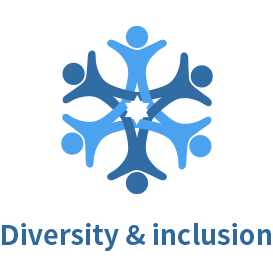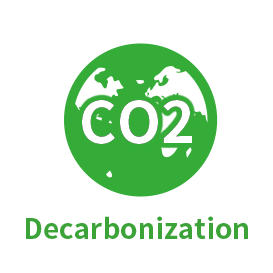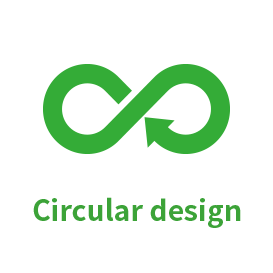- HOME
- Sustainability
- The Nomura Real Estate Group's Stance on Sustainability
- Materiality determination process
Materiality determination process
Determination Process for Sustainability Policy, Priority Issues (Materiality), and Key Performance Indicators (KPIs)

STEP1. Examine long-term social issues extensively
Social issues were broadly identified using international guidelines such as ISO 26000, the GRI Standards and SASB, and information from ESG external assessment questionnaires and external consulting firms as references. Social issues that are closely related to the Group’s business were selected after extensively examining their long-term future outlook, including global environmental and social issues and technological trends.
STEP2. Identify key themes for the Group
Based on the social issues identified in STEP 1, workshops were held for the Group’s young and mid-career employees (183 participants) to gather opinions as to “What kind of value should be provided in 2050?” and “How do you want the company to be viewed in 2050?”. Twelve items were identified in these workshops, then additional workshops were held for the Group’s management (general managers, senior managers, etc., 214 participants) to score the 12 items.
Twelve Items Identified
| Contribute to a circular economy | Contribute to a decarbonized society | Maintain harmony with the natural environment |
| Provide healthy and comfortable lifestyles | Develop smart cities | Promote secure and safe urban development |
| Make unique contribution to regional revitalization | Pursue happiness and dignity for future society | Implement co-creation and open innovation in society |
| Contribute to diversity and inclusion | Cultivate creativity and sensitivity | Develop rules and standards for market creation |
STEP3. Identify key items for stakeholders
We asked 41 stakeholders, including sustainability professionals, institutional investors, business partners, and customers, to score the 12 items identified based on what they expect from the Group and which issues they believe the Group should focus on, and we collected their opinions.
| Stakeholders involved | Number | Stakeholders involved | Number |
|---|---|---|---|
| Sustainability experts | 10 | Business partners (academic institutions in R&D) | 4 |
| Institutional investors | 5 | Business partners (consulting firms) | 2 |
| Financial institution | 3 | JV partner | 1 |
| Customers (tenant companies) | 3 | Prospective employees | 3 |
| Customers (condominium residents) | 4 | Employee union | 1 |
| Business partners (construction companies, design offices) | 5 | Total | 41 |
STEP4. Formulate a sustainability policy and three key themes and finalize priority issues (materiality)
After evaluating the scoring results of Steps 2 and 3, we distributed a questionnaire for the management level employees (20 participants). After further discussions at several Sustainability Committee meetings (chairperson: the president and Group CEO of Nomura Real Estate Holdings), we finalized the Sustainability Policy (the Group’s vision of 2050), the three key themes, and the priority issues (Materiality) for 2030, and reported to the Board of Directors.

| Diversity and inclusion | |
|---|---|
| Stakeholders |
〇Employees, suppliers, customers, local communities |
| Priority reasons |
〇The sustainable growth of the Company depends upon creating an environment in which a workforce with diverse backgrounds and values can accept and respect each other and everyone can demonstrate their abilities to the fullest. |
| The Group’s approach | 〇As a corporate group that connects people, towns, and communities to the future, we will realize lifestyles for which diverse backgrounds and values are respected. |
| Human rights | |
| Stakeholders |
〇Employees, suppliers, customers, local communities |
| Priority reasons |
〇Interest and expectations for human rights are high, internally and externally, and they must be addressed as part of corporate activities. If not taken seriously, the Group’s very existence is not viable. |
| The Group’s approach | 〇We respect people’s dignity and basic human rights throughout our business activities and pursue co-creation initiatives that transcend organizations and business models. |
| Decarbonization | |
| Stakeholders | 〇Employees, suppliers, customers, local communities |
| Priority reasons | 〇The Group’s businesses make extensive use of natural resources and energy, so environmental issues affect its business continuity. 〇Environmental issues affect not only the Group’s businesses but also the lives and businesses of its stakeholders. |
| The Group’s approach | 〇Through urban development and providing products and services that leverage property development and property-related services, the Company will play its part in addressing climate change, as a shared international concern, with the three main focuses of energy conservation, low-carbon buildings, and use of renewable energy. |
| Biodiversity | |
| Stakeholders | 〇Employees, suppliers, customers, local communities |
| Priority reasons | 〇This can contribute to the realization of a decarbonized society as well as the preservation of the natural environment. |
| The Group’s approach | 〇We will promote initiatives such as the restoration of forest cycles through the use of domestic timber. |
| Circular design | |
| Stakeholders | 〇Employees, suppliers, customers, local communities |
| Priority reasons | 〇Initiatives such as incorporating mechanisms that promote resource recycling into the designs of products/services or producing less waste by extending the life of the product itself can contribute to the realization of a decarbonized society. |
| The Group’s approach | 〇We will contribute to the realization of a sustainable society through promoting environmentally sound urban development and service provision including the appropriate use of resources, which also helps reduce CO2 emissions. 〇We will promote appropriate environmental management and comply with environmental laws and regulations. |
STEP5. Set key performance indicators (KPIs) for priority issues (Materiality)
Based on the new mid- to long-term business plan, as well as international frameworks and policy trends such as the GRI Standards, the Sustainability Committee deliberated on and finalized the KPIs for priority issues (Materiality) identified in Step 4 and reported to the Board of Directors.
Achievements and Progress on Priority issues (materiality) for 2030 and KPIs
| Priority issues | KPIs | Achievements and progress | |
|---|---|---|---|
| Society and Employees |   |
Provision of products and services with inclusive design*1 | Promoting inclusive and universal design Diversity and inclusion |
| Procurement guideline survey implementation rate 80% | Compliance with the procurement guidelines Improved supplier management |
||
| Creation of a human rights due diligence system | Creation of a human rights due diligence system Human rights |
||
| Childcare leave utilization rate by men and women 100% | Supporting childcare and nursing care Diversity and inclusion |
||
| Female manager and junior manager ratio 20% | Promoting active participation by women Diversity and inclusion |
||
| Percentage of implementation of one-on-one meetings 100% | Enhancing cultivation of human capital Diversity and inclusion |
||
| Percentage of participation in human rights training 100% | 100% participation rate in human rights training Human rights |
||
| Climate Change and the Natural Environment |    |
CO2 emissions reduce by 35% (compared to fiscal 2019) | Reducing CO2 emissions Decarbonization |
| Energy conservation performance indicators in new buildings Maintain ZEH/ZEB-oriented standards | Acquiring of advanced environmental management certification (DBJ Green Building, LEED, CASBEE, BELS, etc.) Decarbonization |
||
| Develop timber-based buildings : Carbon storage amount 10,000 t-CO2/year | Promoting use of domestic/certified timber Biodiversity |
||
| Obtain biodiversity certification | Number of biodiversity certifications (ABINC / JHEP / SEGES) acquired Biodiversity |
||
| Initiatives to promote building longevity : Implementation rate of the Company’s own standards 100% | Provisioning products and services with long lifespans and high durability Circular design |
||
| Promote waste reduction and increase the recycling rate : Rate of reducing industrial waste 20% | Reducing waste discharge Circular design |
||
Sustainability
- The Nomura Real Estate Group’s Stance on Sustainability
- Climate Change and the Natural Environment
- Society and Employees
- ESG Data


